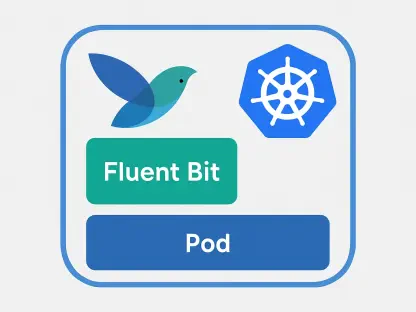The rapid advancements in AI research tools have sparked a debate over accessibility and performance. OpenAI’s Deep Research, a proprietary tool integrated into ChatGPT Pro, offers advanced research automation but comes with a hefty price tag. In response, Hugging Face has developed an open-source alternative, Open DeepResearch, aiming to democratize access to powerful AI research capabilities.
The Rise of AI Research Tools
OpenAI’s Deep Research: A Game Changer
OpenAI’s Deep Research is designed to assist professionals by autonomously scanning online sources, processing data, and generating structured outputs. Integrated into ChatGPT Pro, it is available for $200 per month, making it a premium tool for those who can afford it. This tool leverages the powerful o3 model, providing deep reasoning and dynamic interaction with web content. Its integration into ChatGPT Pro means users benefit from an advanced AI model that can adapt and refine its output based on feedback, making it highly efficient for intensive research tasks.
The o3 model’s capabilities extend beyond simple data extraction. It allows the system to interpret and analyze information in a way that mimics human reasoning, offering deeper insights and more relevant summaries. This feature is particularly valuable for professionals requiring efficient, accurate research outputs in fields such as academia, law, and finance. However, the high subscription fee associated with accessing Deep Research creates a significant barrier, limiting its user base to those able to justify the substantial monthly investment.
The Accessibility Challenge
The high subscription fee of Deep Research limits its accessibility, raising concerns about the inclusivity of cutting-edge AI tools. Independent researchers, journalists, and academics often find such costs prohibitive, creating a barrier to entry for those who could benefit from these advanced capabilities. Financial constraints prevent a wide array of potential users from leveraging this powerful tool, thereby stifling innovation and research opportunities in various sectors that rely on comprehensive data analysis.
Accessibility is a crucial factor in the broader adoption of AI-driven research tools. The prohibitive costs of proprietary solutions like Deep Research highlight a significant gap in the market. Many professionals and institutions that would benefit from such powerful tools are sidelined due to budgetary limitations. This exclusion can hinder the progress of independent research and innovation, emphasizing the need for more accessible alternatives that maintain robustness and efficiency.
Hugging Face’s Open DeepResearch: An Open-Source Alternative
Development and Community-Driven Approach
Hugging Face, led by co-founder and chief scientist Thomas Wolf, has developed Open DeepResearch as a community-driven project. This open-source tool aims to provide similar research automation capabilities while ensuring transparency and customizability. It is based on publicly available frameworks and employs an agent-based AI system to structure research tasks into sequential steps. This collaborative approach not only democratizes access to sophisticated AI tools but also encourages community contributions to improve and refine the system continuously.
The operational framework of Open DeepResearch allows users to customize and tailor the tool to their specific needs. By leveraging public frameworks and community-driven enhancements, it offers a flexible and adaptable solution that can be modified to better serve the diverse requirements of various research domains. This commitment to open-source principles ensures that Open DeepResearch remains accessible and evolves based on the collective input of its user base, fostering a culture of shared growth and innovation.
Performance and Limitations
While Open DeepResearch does not yet match the performance of OpenAI’s Deep Research, it shows promise. It uses OpenAI’s o1 model and other available models through the OpenAI API. Initial testing with an independent model, DeepSeek R1, revealed challenges with accuracy and reasoning, prompting reliance on established models. The tool’s text-based web scraper limits its ability to process multimedia-rich sources, narrowing its scope. Despite these constraints, Open DeepResearch remains a viable option for those who prioritize accessibility and customization over cutting-edge performance.
The evolution of Open DeepResearch illustrates the ongoing struggle between achieving high performance and maintaining an open, accessible framework. Although currently reliant on older AI models, the tool’s development indicates a strong potential for improvement. As the community continues to contribute and refine the system, there is optimism that Open DeepResearch can bridge the performance gap, ultimately providing a more inclusive research tool without compromising on quality.
Technical Innovations and Challenges
Inspiration from Microsoft’s Magentic-One
Open DeepResearch incorporates elements inspired by Microsoft’s Magentic-One, a modular multi-agent AI system used for complex task automation. This inspiration is reflected in the agent-based approach to structuring AI workflows for tasks such as web navigation and file analysis, enhancing the tool’s flexibility and dynamic execution capabilities. The modular design ensures that each agent handles a specific aspect of the research task, streamlining the process and reducing the likelihood of errors or omissions.
The influence of Magentic-One is evident in how Open DeepResearch manages the compartmentalization and execution of research tasks. By mimicking the modular approach, the system improves its adaptability and efficiency, allowing for more streamlined research processes. This hierarchical task management framework ensures that each module performs specialized functions, contributing to the overall accuracy and effectiveness of the research output. As a result, Open DeepResearch can better manage complex tasks, positioning itself as a formidable alternative to proprietary solutions.
GAIA Benchmark and Performance Improvements
The effectiveness of Open DeepResearch was evaluated using the GAIA benchmark, where it scored 54% compared to Deep Research’s 67.36%. Transitioning from a JSON-based agent structure to a code-based execution model significantly improved performance, highlighting the potential for further optimization. The shift to a code-based model enhanced the system’s flexibility, allowing for more dynamic interaction with data and improved adaptability to various research contexts, resulting in higher benchmark scores.
These performance improvements underscore the importance of continual system refinement and optimization. By transitioning to a more flexible and dynamic execution model, Open DeepResearch has shown that even open-source tools can achieve significant advancements in performance. The GAIA benchmark results, while illustrating the current gap between Open DeepResearch and proprietary tools like Deep Research, also highlight the potential for ongoing improvements that could eventually narrow this gap significantly.
Addressing Context Window Constraints
Token Management Challenges
One of the significant challenges faced by Open DeepResearch is managing the context window constraint, which limits the amount of information processed in a single task. Token overflow errors often result in incomplete responses or task failures, particularly during longer investigations. Improving efficiency in token management, including text compression and external memory options, is crucial for overcoming these limitations. By optimizing how information is handled and stored, the system can better manage larger datasets, reducing errors and improving overall task completion rates.
Token management is a critical aspect of enhancing the reliability and accuracy of AI-driven research tools. The current limitations necessitate innovative solutions to ensure that Open DeepResearch can handle more extensive and complex research tasks. This includes exploring advanced text compression techniques and integrating external memory options to extend the context window. Continuous efforts in this area are vital for the tool’s development, aiming to provide more comprehensive and accurate results for users without compromising on the speed and efficiency of the research process.
Future Development and Optimization
Ongoing optimization efforts are focused on enhancing the tool’s performance and expanding its capabilities. By addressing the context window constraints and improving token management, Open DeepResearch aims to close the performance gap with proprietary tools like Deep Research. Future developments may include integrating more advanced AI models, exploring novel data processing techniques, and incorporating user feedback to refine the system further. These efforts are geared towards creating a more robust and reliable tool capable of meeting the diverse needs of its user base.
The path forward for Open DeepResearch involves a relentless pursuit of innovation and improvement. The commitment to an open-source paradigm ensures that future enhancements will continue to be community-driven and accessible. As the tool evolves, bridging the performance and functionality gap with proprietary alternatives becomes increasingly achievable. By focusing on resolving current limitations and incorporating advanced AI technologies, Open DeepResearch is well-positioned to become a leading solution in the AI research tool landscape.
The Broader Context of AI Development and Access
The Debate Over Closed AI Advancements
The development of AI research tools has sparked a broader debate over the closed nature of recent advancements and the rising costs associated with access. OpenAI defends its premium approach, citing resource and security issues, while critics highlight concerns about accessibility for independent researchers and academics. This ongoing debate underscores the tension between innovation and inclusivity in AI development. As powerful AI tools become more sophisticated, the need for equitable access grows, prompting calls for more open-source alternatives that can democratize the benefits of advanced AI technology.
This debate reflects broader societal and ethical considerations regarding the distribution of technology. The high costs of proprietary solutions can exacerbate existing inequalities, limiting access to those with financial resources while excluding others who could contribute significantly to research and innovation. Addressing these concerns requires a balanced approach that considers both the need for resource allocation and the imperative of inclusivity. Open-source solutions like Open DeepResearch play a crucial role in this context, advocating for a more inclusive digital ecosystem.
The Role of Open-Source Models
Hugging Face’s Open DeepResearch represents a push towards a more inclusive and transparent AI research environment. By maintaining an open-source model, it aims to provide accessible and customizable tools that can foster innovation and collaboration within the AI community. This approach not only democratizes access to advanced AI capabilities but also promotes a culture of shared knowledge and continuous improvement. Open-source models encourage experimentation and innovation, allowing users to adapt and enhance the tool according to their unique needs and research goals.
The role of open-source models in the AI research landscape is increasingly pivotal. As more organizations and individuals contribute to these community-driven projects, the collective advancements benefit all users, creating a more equitable distribution of AI resources. Open-source initiatives like Open DeepResearch exemplify this trend, providing a platform for collaborative development and shared progress. By prioritizing transparency and accessibility, these models can significantly impact the AI research community, fostering a more diverse and innovative environment.
Independent Developers and Future Prospects
Contributions from Independent Developers
Other independent developers are also making strides in building AI research tools. Projects from Jina-AI, mshumer with OpenDeepResearcher, and David Zhang (dzhng) with another independent implementation contribute to the growing ecosystem of open-source AI research tools. These initiatives highlight the diverse approaches within the community, each offering unique insights and advancements that collectively drive the field forward. Independent developers play a crucial role in expanding the horizons of what open-source AI research tools can achieve, introducing novel solutions and challenging established paradigms.
The contributions of independent developers underscore the collaborative spirit inherent in the open-source community. Each project adds valuable knowledge and expertise to the collective pool, fostering an environment of mutual benefit and shared progress. The innovation and creativity brought by these developers often lead to breakthroughs that might not emerge within more rigid, proprietary systems. This dynamic and inclusive approach ensures that the evolution of AI research tools remains vibrant and multifaceted.
The Path Forward
The fast-paced advancements in AI research tools have ignited a significant debate regarding accessibility and performance. OpenAI’s Deep Research, which is a proprietary application seamlessly integrated into the ChatGPT Pro model, presents highly sophisticated research automation capabilities. However, this cutting-edge tool is accompanied by a considerable price, making it less accessible to many potential users. In contrast to this, Hugging Face has introduced an open-source alternative called Open DeepResearch. This tool is designed to democratize access to powerful AI research functionalities, ensuring that a broader audience can benefit from these advanced capabilities without the financial burden. By offering Open DeepResearch, Hugging Face aims to bridge the gap in access to superior AI research tools, allowing more individuals and institutions the opportunity to harness and utilize advanced AI research techniques. The debate continues as more organizations and developers strive to make AI research more accessible and affordable.









